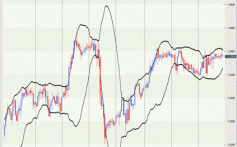Want to Be a Millionaire You Can!
Post on: 16 Март, 2015 No Comment

Teens and Their Money
By Selena Maranjian
The world is full of empty promises. Advertisements tell us to buy an amazing cream because it will make us beautiful, or to buy that weird-looking contraption because it will tone our muscles and make us popular.
And here comes the Fool, with another promise. Invest money now and we’ll help make you a millionaire, or at least comfortably well-off in your adulthood. Gee, that sounds even less believable than the beauty cream, doesn’t it? But it’s true. You can print this out and take it to your math teacher, and she can verify it.
If you leave your money to grow for a long time, $100 can turn into a million dollars. No, seriously. How? Through compounding.
The Magic of Compounding
If you’re not the type who enjoys math class, who delights in solving for X and figuring out how long it will take a plane to get from Los Angeles to New York if it’s going 650 miles per hour, you might expect this section to be boring. It’s all about numbers, after all. Give it a chance, though — these numbers will show you how money grows and how millionaires are made.
Just how magical compounding can be depends on three factors:

- How much money you invest
- How much time it spends growing
- Its rate of growth
Let’s look at some examples, to see how it can work.
Compounding is when something grows over time, and the amount by which it grows is also growing. It’s much easier to understand when you consider some examples. (Math alert! Math alert! Keep reading, though — it’s just multiplication, and it’s very important stuff.) Let’s start with a simple example. We’ll use 10% as our annual growth rate and start small, with $100. Let’s call this Year 0, when we start with $100. One year later, in Year 1, our $100 has grown by 10%. Since 10% of 100 equals $10, we add that to our money and end the year with $110. Got that? (Note: Remember, to find out what 10% of anything equals, just multiply the number by 0.10. To find 5%, multiply by 0.05. For 25%, by 0.25.)
In Year 2, we add another 10%. But this time you don’t end up with $10. Ten percent of $110 is $11. So we end Year 2 with $121 ($110 plus $11 equals $121). In Year 3, we add 10% again, or $12.10. Our new total is $133.10. Here’s a table that will make it clearer:














